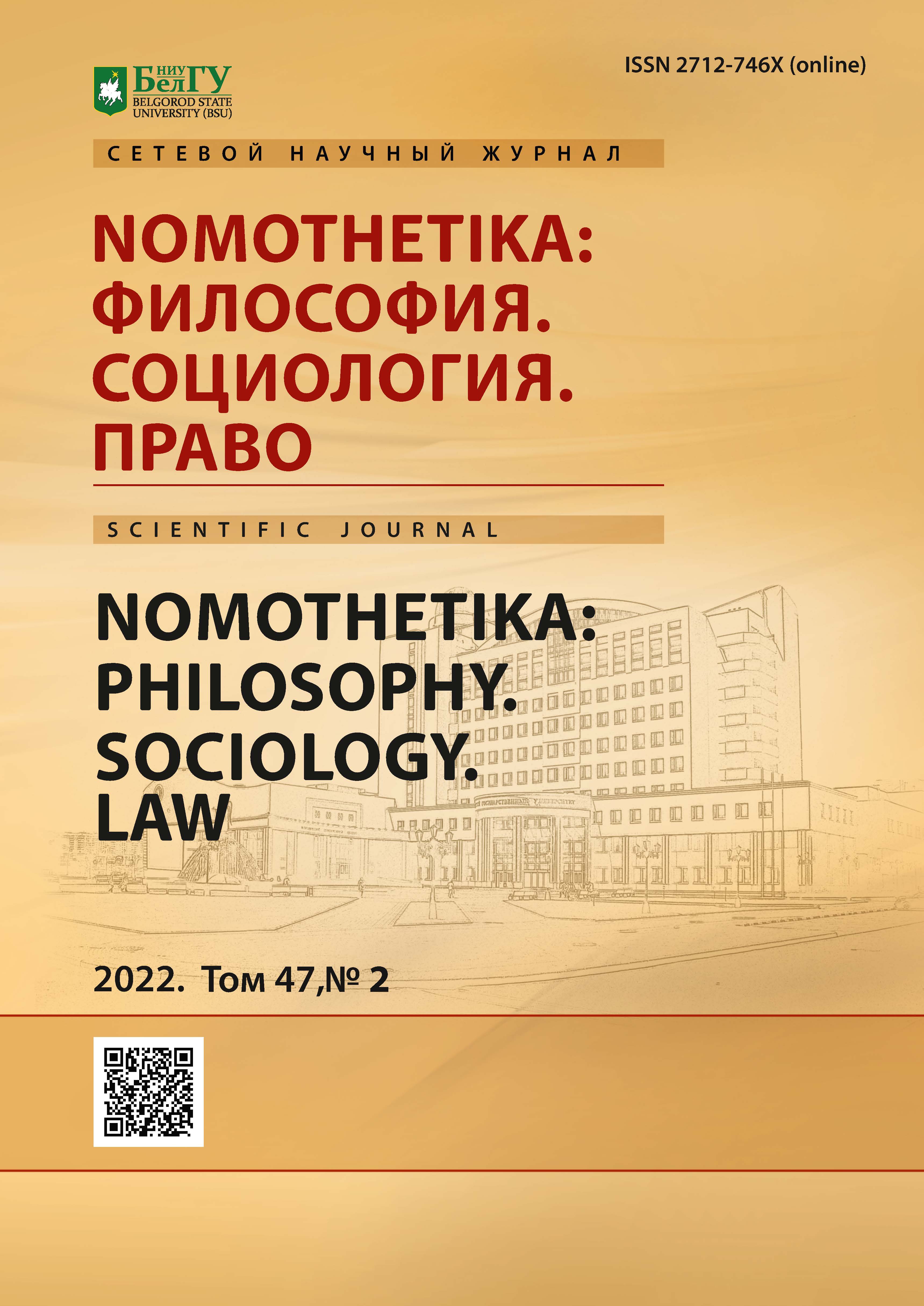Opposition of Self-presentation and Anonymity as Aspects of the Homo Virtualis Body
DOI:
https://doi.org/10.52575/2712-746X-2022-47-2-394-398Keywords:
virtual space, virtual body, conventional body, avatar, self-presentation, anonymity, imulacrum, communicationAbstract
The article deals with the virtual corporality of a person as a unity and confrontation of the desire for self-presentation and anonymity in the virtual space. Within the framework of this topic, a brief review and analysis of studies devoted in whole or in part to these aspects of the virtual corporality was made. As a result of the analysis, the points of contact of the studied aspects with each other were identified, the inconsistency of their joint existence was noted both within a specific virtual body and within the boundaries of a particular virtual space. The state of the superposition of virtual corporality is revealed, characterized by the interpenetration of the studied aspects and the leveling of the degree of alienation from one's own body. The key communicative role of the virtual body is noted.
Downloads
References
Беляев Д.А. 2012. Виртуальное Net-бытие пост (сверх) человека. Вестник Волгоградского государственного университета, 3(18): 15–21.
Бодрийяр Ж. 2006. Общество потребления. Его мифы и структуры. М., 269 с.
Быльева Д.С. 2013. Семиотика знаков самоидентификации в сети Интернет. Научно-технические ведомости Санкт-Петербургского государственного политехнического университета. Гуманитарные и общественные науки, 1: 25–29.
Литвинова Д.А. Остроухова П.В. 2015. cc: между худобой и анорексией. Журнал исследований социальной политики, 13(1): 33-48.
Прудникова Е.В. 2014. Информационная культура в виртуальном мире: проблемы и перспективы. Научные ведомости Белгородского государственного университета. Серия: Философия. Социология. Право, 16(187): 94–98.
Самойлова Е.О., Шаев Ю.М. 2019. Тело и телесность в контексте визуальных практик постинформационного общества. Общество: Философия, История,
Культура, 1(57): 35-40.
Тендрякова М.В. 2015. Игровые миры: от homo ludens до геймера. М., СПб., Нестор-История, 224 с.
Широканова А.А. 2014. ММОРПГ как площадки формирования личной идентичности. Вестник Волгоградского государственного университета, 3 (23): 78-87.
Bélisle, J.-F. 2010. Avatars as information: Perception of consumers based on their avatars in virtual worlds. Psychology & Marketing, Vol. 27, Iss. 8: 750-765.
Gulz, A. 2004. Benefits of Virtual Characters in Computer Based Learning Environments: Claims and Evidence. International Journal of Artificial Intelligence in Education, 14: 313-334.
Prensky M. 2001. Digital Natives, Digital Immigrants. On the Horizon, 9(5): 1–6. DOI: 10.1108/10748120110424816
Vasalou A., Joinson A.N. 2009. Me, myself and I: The role of interactional context on self-presentation through avatars. Computers in Human Behavior. Vol. 25 (2): 510-520.
Weis, Martin. 2015. “Bio-Gaming: The Real Biopolitics of Virtual Bodies. ”PhD diss., University of California, Davis, 133 p.
Zhao, S. 2004. Toward a Taxonomy of Copresence. Presence: Teleoperators & Virtual Environments, 5: 445-455.
Abstract views: 185
Share
Published
How to Cite
Issue
Section
Copyright (c) 2022 NOMOTHETIKA: Philosophy. Sociology. Law

This work is licensed under a Creative Commons Attribution 4.0 International License.


